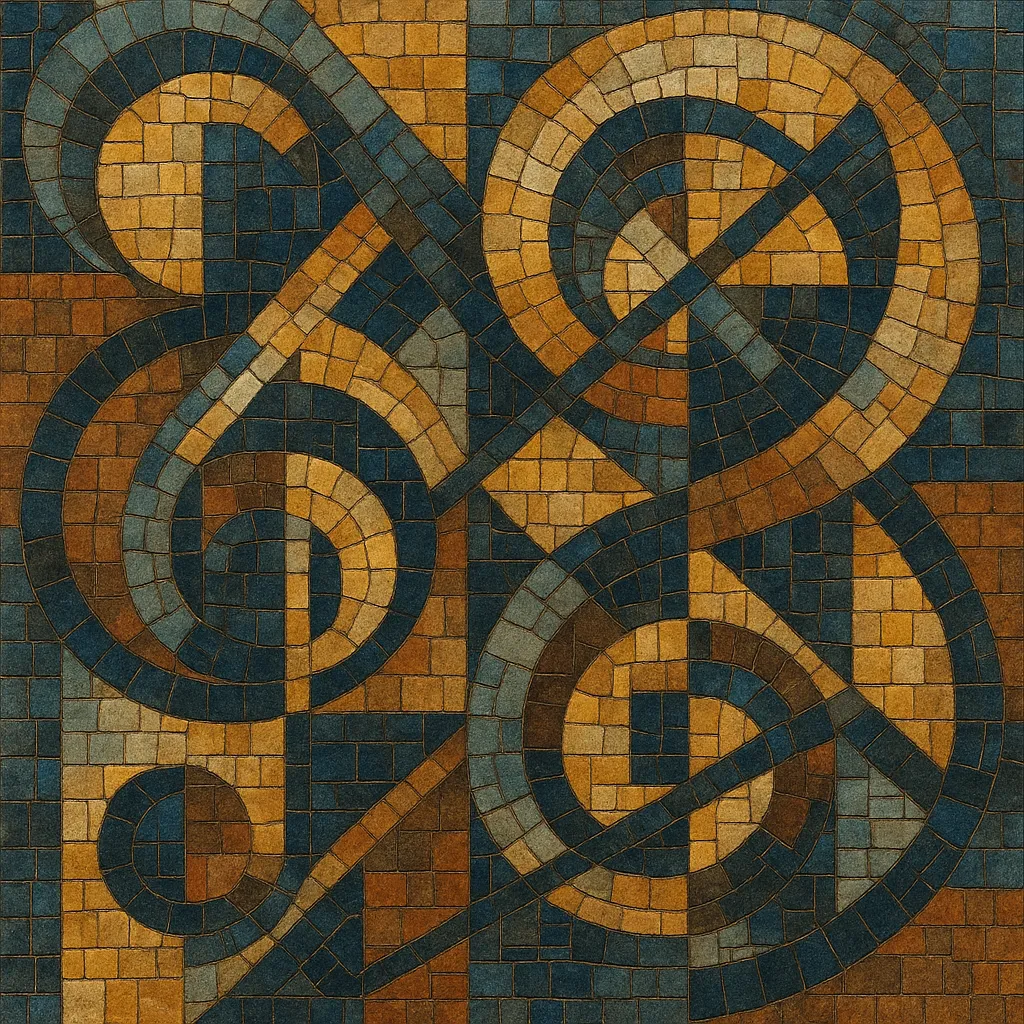A fugue is a contrapuntal composition built around a single, clearly defined musical subject that is imitated and developed across multiple independent voices. One voice introduces the subject, and subsequent voices enter successively with an answer (a transposed version of the subject), often accompanied by a recurring countersubject.
After the exposition, episodes made from fragments of the subject and countersubject modulate to related keys and prepare further entries. Composers employ devices such as inversion, augmentation, diminution, stretto, and pedal points to intensify the texture and drive form. Fugues appear as stand‑alone keyboard or organ works, as movements in chamber and orchestral music, and as sections within larger vocal or instrumental genres.
Imitative polyphony of the late Renaissance laid the groundwork for the fugue. Italian forms such as the ricercar and canzona, along with freely imitative fantasias and motets, developed techniques of subject imitation and intervallic planning that would crystallize in the Baroque fugue.
By the 1600s, keyboard and organ traditions in Italy, the Low Countries, and German-speaking lands refined fugal practice. Sweelinck and Frescobaldi codified keyboard counterpoint; Buxtehude, Pachelbel, and Handel expanded organ and vocal fugue. Johann Joseph Fux’s Gradus ad Parnassum (1725) systematized contrapuntal pedagogy. J. S. Bach brought the fugue to its apex in The Well‑Tempered Clavier and The Art of Fugue, demonstrating exhaustive techniques and expressive range.
While galant and classical styles favored homophony, composers retained fugue for climactic or learned moments: Haydn and Mozart studied Bach’s counterpoint, and Beethoven integrated fugues into piano sonatas, string quartets, and the monumental Grosse Fuge. The 19th century saw organ and choral revivals (Mendelssohn) and symphonic or pianistic fugues by Liszt and Franck.
Composers continued to employ fugue as both a form and technique: Reger and Hindemith wrote modern tonal/neo-baroque fugues; Shostakovich’s 24 Preludes and Fugues reimagined the tradition in a 20th‑century idiom. Fugal thinking permeated film scores, jazz/classical hybrids (third stream), and progressive rock/metal via “fugato” passages. Today, fugue remains central in composition pedagogy and a durable tool for large‑scale musical argument.
Choose a concise subject with a strong rhythmic/intervallic profile (often 1–4 measures) that can withstand inversion, augmentation, and fragmentation. Plan whether the answer will be real (intervals preserved) or tonal (adjusted to maintain tonal function). If a countersubject is used, design it for invertible counterpoint so it can accompany the subject in any voice.
Decide the number of voices (commonly 3–4). Write an exposition where each voice enters sequentially: Voice 1 states the subject (tonic), Voice 2 answers (dominant), Voice 3 restates the subject (tonic), etc., with countersubjects or free counterpoint filling the texture. Aim for clear entries, strong cadence points, and lucid spacing.
Craft episodes by sequencing and developing motives from the subject/countersubject. Modulate through closely related keys. Alternate episodes with middle entries of the subject in different keys and voices. Employ stretto (overlapping entries), inversion, augmentation, diminution, and pedal points to build intensity and variety.
Keep a clear tonal plan: establish the home key in the exposition, move to dominant and relative areas in the middle, then return convincingly to the tonic. Let rhythm energize the subject (e.g., a distinctive upbeat or syncopation) and use sequences for forward momentum. Maintain independence of lines; avoid parallel fifths/octaves and manage dissonance with prepared suspensions and passing tones.
Fugues work on keyboard/organ, string quartet, choir, or full orchestra. Register and articulation should clarify subject entries and contrapuntal layers (e.g., organ registrations that separate voices; string bowings that articulate subject heads). Tempo should allow clarity of lines; dynamic shaping can highlight entries and stretti.
Explore double or triple fugues (multiple subjects), fughettas (short fugues), and fugato sections within larger movements. In large-scale works, place a culminating stretto and a strong final statement of the subject before the coda to affirm the tonic.


